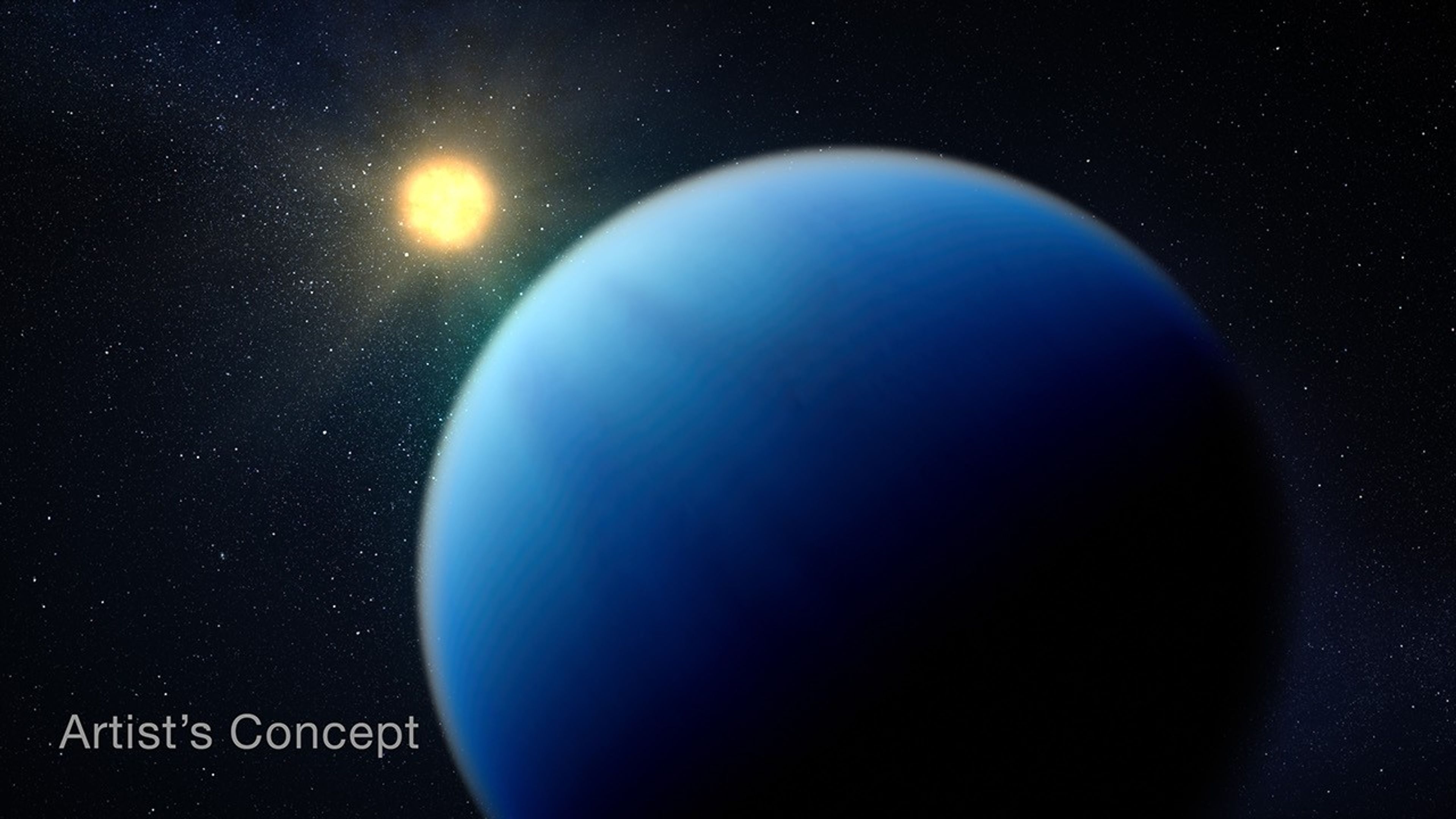1 min read
Hot Sub-Neptune Spectrum

A transmission spectrum captured by NASA’s James Webb Space Telescope reveals the presence of water (H2O) and the possible presence of sulfur dioxide (SO2) and carbon monoxide (CO), but no signs of carbon dioxide (CO2) or methane (CH4), in the atmosphere of the hot sub-Neptune exoplanet TOI-421 b. The observations support the hypothesis that planets this hot (TOI-421 b is about 1,340°F) have clear atmospheres that are not obscured by clouds and haze.
The spectrum was made by measuring the decrease in apparent brightness of different wavelengths (colors) of starlight as the planet transited, or moved across the face of the star. During a transit, some wavelengths of starlight are transmitted through the planet’s atmosphere, while others are partially blocked. Because each molecule absorbs a unique combination of wavelengths, the transmission spectrum can be used to identify gases in the atmosphere.
This spectrum was made by combining data captured in 2023 by Webb’s NIRISS (Near-Infrared Imager and Slitless Spectrograph) and NIRSpec (Near-Infrared Spectrograph).
Extended Description and Image Alt Text
Extended Description
Graphic titled “Exoplanet TOI-421 b Hot Sub-Neptune, NIRISS Single Object Slitless Spectroscopy, NIRSpec Bright Object Time-Series Spectroscopy” shows a graph of amount of light blocked on the y-axis versus wavelength of light on the x-axis. 27 NIRISS data points with error bars are plotted in orange from about 0.8 to 2.8 microns. 32 NIRSpec data points with error bars are plotted in red from about 2.8 to 5.2 microns. A jagged best-fit line plotted in blue runs from 0.8 to 5.5 microns, intersecting some of the data. The line forms peaks at about 0.9, 1.2, 1.4, 1.9, and 2.8 microns that are highlighted with semi-transparent blue columns, one of which is labeled Water H 2 O. A peak at 4.0 microns is highlighted in green and labeled Sulfur Dioxide S O 2. A relatively flat portion of the best-fit line around 4.8 microns is highlighted in red and labeled Carbon Monoxide C O. In the background of the graphic is a fuzzy blue planet and a bright yellow star.
Image Alt Text
Graphic titled “Exoplanet TOI-421 b Hot Sub-Neptune, NIRISS Single Object Slitless Spectroscopy, NIRSpec Bright Object Time-Series Spectroscopy” shows a graph of amount of light blocked on the y-axis versus wavelength of light on the x-axis.
- Release DateMay 5, 2025
- Science ReleaseNASA’s Webb Lifts Veil on Common but Mysterious Type of Exoplanet
- CreditIllustration: NASA, ESA, CSA, Joseph Olmsted (STScI)
Share
Details
Laura Betz
NASA’s Goddard Space Flight Center
Greenbelt, Maryland
laura.e.betz@nasa.gov
NASA, ESA, CSA, Joseph Olmsted (STScI)































